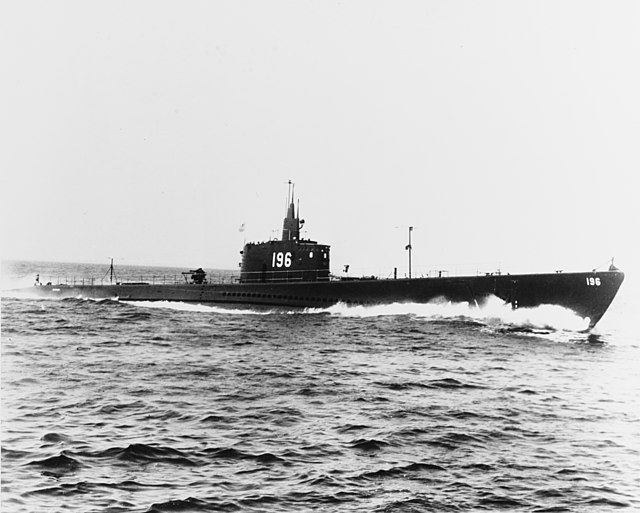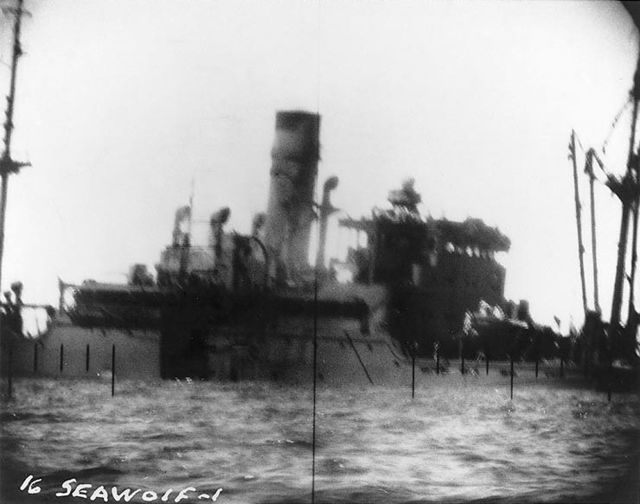The Sargo-class submarines were among the first United States submarines to be sent into action after the Japanese attack on Pearl Harbor, starting war patrols the day after the attack, having been deployed to the Philippines in late 1941. Similar to the previous Salmon class, they were built between 1937 and 1939. With a top speed of 21 knots, a range of 11,000 nautical miles (20,000 km), and a reliable propulsion plant, along with the Salmons they were an important step in the development of a true fleet submarine. In some references, the Salmons and Sargos are called the "New S Class", 1st and 2nd Groups.
USS Searaven during her sea trials on 13 May 1940
Periscope photo of a Japanese merchant ship sinking after being torpedoed by Seawolf.
The United States Navy Salmon-class submarines were an important developmental step in the design of the "fleet submarine" concept during the 1930s. An incremental improvement over the previous Porpoise class, they were the first US submarine class to achieve 21 knots with a reliable propulsion plant, allowing them to operate with the Standard-type battleships of the surface fleet. Also, their 11,000 nautical miles (20,000 km) unrefueled range would allow them to operate in Japanese home waters. These rugged and dependable boats provided yeoman service during World War II, along with their immediate successors, the similar Sargo class. In some references, the Salmons and Sargos are called the "New S Class", 1st and 2nd Groups.
USS Salmon on trials in 1938
Periscope photo of Yamakaze sinking.




